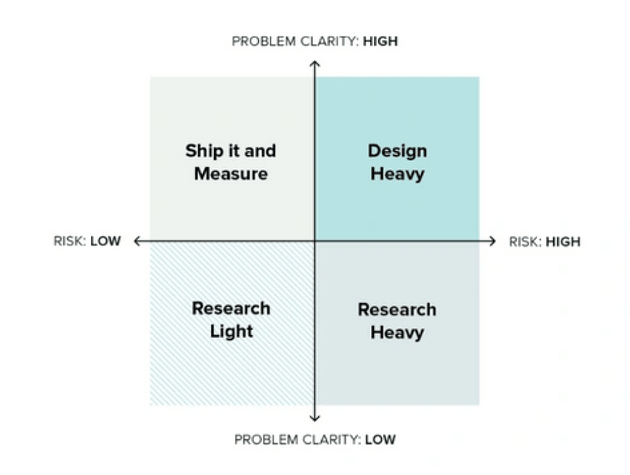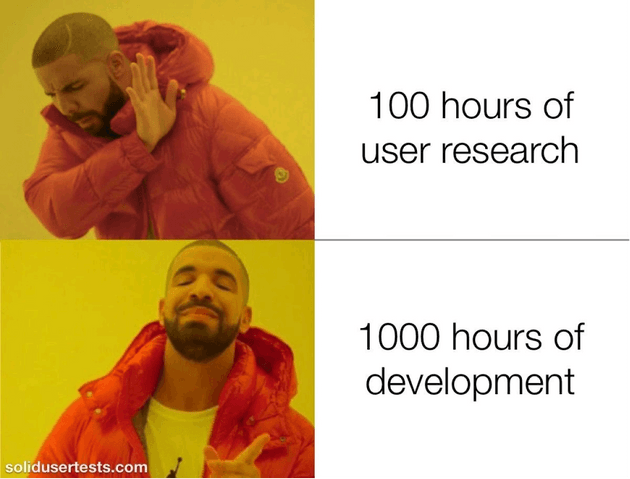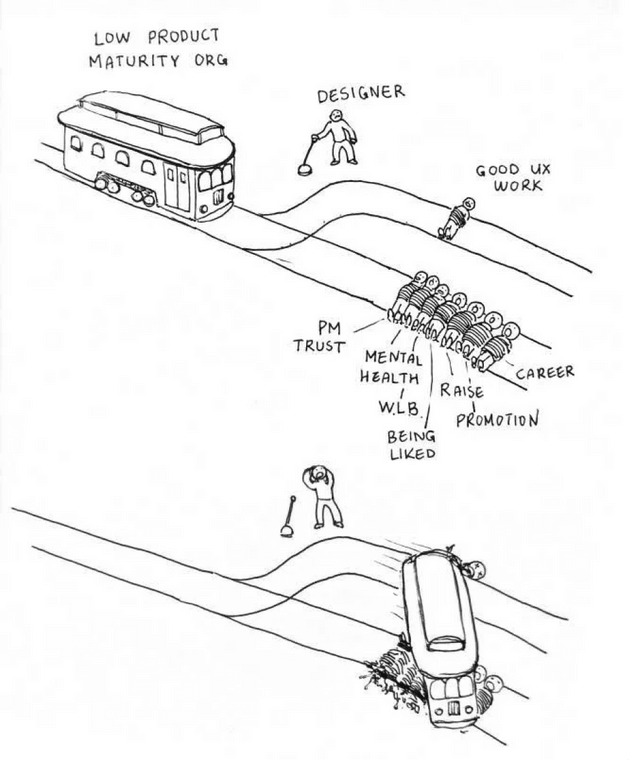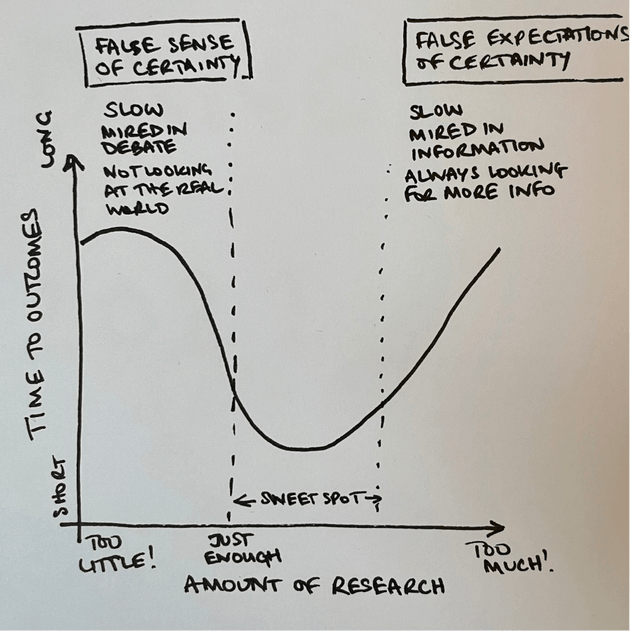Motivation
When undertaking a task, everyone wants to express their opinion, which is often based on supposed expertise, personal experience, or beliefs. This typically results in a biased opinion and unnecessarily complicates working together. Especially in meetings, only two people talk at the end.
So far, I have observed that if we quickly form a conclusion, we are less willing to listen to others. We are emotionally attached to our idea. Why? Because being wrong or admitting our idea is flawed is emotionally challenging. Therefore we slip into a defensive role.
When we are quick to anger, we are slow to understand. - Ladybug (Bullet Train)
Challenge
Avoid emotion-driven design which also leads to a toxic atmosphere. Fortunately, some methods can help us. But first, we should be aware that different ways of knowing exist. This improves our understanding of our colleagues and the diversity of our knowledge.
Amy Blackstone distinguishes between five different ways of knowing: informal observation, selective observation, overgeneralization, authority, and research methods.
Informal observation
Making observations without any systematic process of proofing their accuracy. E.g. I think the weather is getting colder.
Selective observation
By focusing on patterns we want to see or assuming only patterns we have personally encountered exist. E.g. A person who only notices the flaws in their coworkers’ work and ignores their strengths.
Overgeneralization
Making observations without any systematic process of proofing their accuracy. E.g. I think the weather is getting colder.
Authority
Without questioning what we think we know to be true, we may wind up believing things that are actually false. E.g. The earth is the center of the universe. This was the belief of the Catholic Church, which held a great deal of authority in Europe at the time.
Research methods
A systematic, logical approach to understand and learn our reality.
The first four types of knowledge are in human nature. As a result, changing old habit patterns and learning new ones — which are true research methods — take time. Time that our team and company simply do not have, or do they?
So how do we achieve a great outcome in a short amount of time? Without sacrificing our user experience and the momentum and excitement of our team?
Solution
The first thing we do is make sure we have a problem statement rather than just a task. If the problem statement is too generic we reframe it. This helps our team to connect divergent perspectives to shared and objective goals. Without a clear problem statement, people will start interpreting based on emotion and feelings.
Next step
Old habit
Jumping straight into the solution process cause we want to be fast any you already have an idea. This will lead to more meetings, arguments, and iterations. Cause we will need to convince everyone later on and defend our solution and assumptions.
New habit
Starting with a session to kick things off. I always give a short summary of the situation of the IS and where our team needs to be. Since each team member has a different level of knowledge and understanding of the issue, this helps in improving the understanding and alignment. I often do this in collaboration with a Frontend and/or Backend Developer.
With little experience in research methods, your team will be slower at first. But it will pay off. Besides, slow is smooth, and smooth is fast. Cause we will have fewer iterations, less arguing, and therefore fewer meetings.
Note: In our situation, research methods do not imply doing surveys, A/B testing, or interviews. We are talking about concepts like affinity mapping, card sorting, and user flows.
Unfortunately, there is no real guide or checklist we can follow since each team and business operates differently. But there are some articles which can help us for a better alignment, understanding and expectation within our team and colleagues. Improvise. Adapt. Overcome.
#1 Article: How much research is just enough research?
We know that even research cannot predict the future but it can minimize the risk to develop the wrong thing and reduce the unknowns so that you and your team can make better decisions in advance. Overall, the guessing process is being minimized.
On the left side of the graph, we’re doing too little research
On average, it takes longer to reach the desired outcome. Why? Simply because we’ll have to build everything that doesn’t function as well as everything that does before we can figure out which is which.
On the right side of the graph, we’re doing too much research
We want guarantees that anything we build will not fail. However, no such certainty exists. Don’t overthink it. There is a deadline to meet.
Article: Link
#2 Article: Prioritizing user research
Features that solves a problem or a user need can be prioritized in a very effective way. Depending on the risk or problem clarity the priority of the problem space and solution space can shift.

Article: Link
#3 Article: Less is more
Which results in less design, less code. This means less time is spend on maintenance in general. In conclusion putting more effort at the beginning will lead to less work at the end. So claiming that research is slowing you down misses the big picture.
Additive ideas come to mind quickly and easily, but subtractive ideas require more cognitive effort. Because people are often moving fast and working with the first ideas that come to mind, they end up accepting additive solutions without considering subtraction at all. - Benjamin Converse
To add is expected, to subtract is design.
Article: Link
Side note
I found a great summary for the maturity of user research by Jared M. Spool. If you want to increase the I found a great summary for the maturity of user research by Jared M. Spool. If you want to increase the stage of maturity in your team or company I can highly recommend the UX maturity models. Which I have summarized briefly: Link
Maturity of User Research:
Stage -1: Wrong activities are more harmful than no research. Teams get poor direction from ineffective research activities. These include unmoderated usability testing, surveys (especially satisfaction surveys, NPS, and SUS), session recording tools, misinterpretation of analytics, focus groups, and A/B testing.
Stage 0: No user research at all. Teams are focused only on business and technology needs.
Stage 1: Basic usability testing. Teams conduct usability tests where they derive tasks from function points in the product, service, or feature they’re evaluating.
Stage 1.5: Basic usability testing with tasks from customer support. Teams switch to task scenarios that they glean from reported customer problems.
Stage 2: Interview-based task usability testing. Teams use tasks that come from user research to validate the design.
Stage 3: Basic field research. Teams go into the users’ environments to learn more about how users integrate the product, service, or feature.
Stage 4: Focused field research. Teams seek out users and environments to fill in gaps in the team’s knowledge.
Stage 5: Longitudinal studies. Teams conduct in-depth research into the lives of users; before, during, and after their use of the product, service, or feature.
Stage 6: Strategic user research. Teams conduct research that directs where the organization’s product and service strategies should go. Exposure is critical for our success. Researchers can’t be the only ones with primary exposure.


